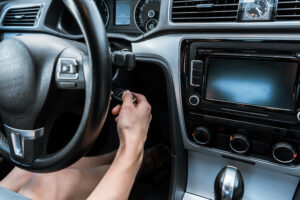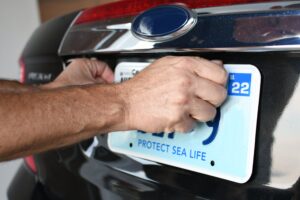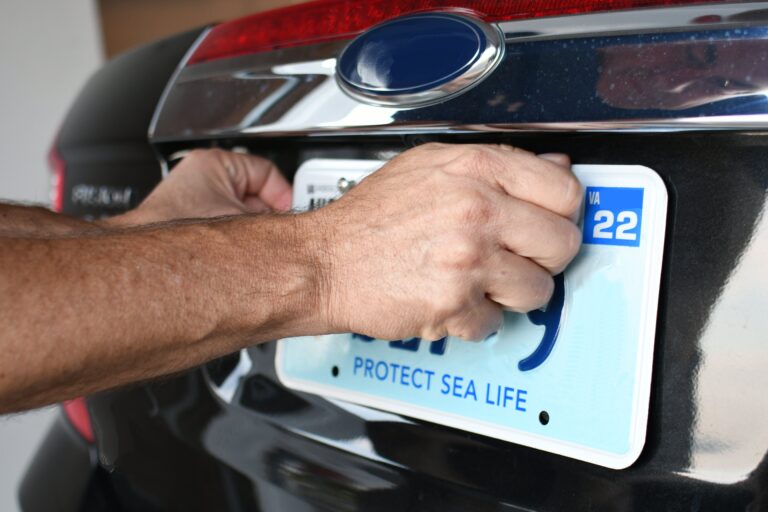With over 15 years experience as a master technician, I know firsthand how frustrating a no-start condition can be. Whether you’re stuck in the driveway or stranded miles from home, a car that won’t start leaves you scrambling for solutions.
In this comprehensive guide, I’ll draw on my expertise diagnosing and repairing all makes and models to explore the most common reasons behind why you car won’t start. I’ll walk through how to troubleshoot your engine’s key electrical, fuel, and ignition systems to zero in on the root cause. You’ll learn tips to try getting your car running in a pinch, when to resort to makeshift fixes, and when to call in a professional mechanic like me to properly resolve stubborn issues. Equipped with this knowledge, you’ll be able to approach your next no-start scenario with confidence instead of panic. So let’s get started and get you back on the road!
Instead of reading you can get an Online mechanics help to figure out and solve your car issue quickly, and save you money in the process. You get access to unlimited help and advice for a full week through a convenient online chat or phone call, with a real ASE-certified mechanic for just $5, which is crazy cheap. Click here to chat with an Online Mechanic now!
1. Dead Car Battery Or Dying Battery

A bad battery or faulty battery is a common reason for a car not starting. Cars need electrical power to run, which comes from the battery. The starter motor also requires the battery’s electrical signal to turn over the engine. So if your battery has issues, your engine likely won’t crank when you try starting your car.
Checking if your engine turns over is a good first test if you have a no-start situation. Other signs like the light come on but are dim can also indicate a dead battery.
The good news is you can often get your car going again with a simple jump start to revive the dead battery. This involves using jumper cables to connect your battery to a fully charged one in another vehicle.
While attempting to jump start your car and getting the engine to run is temporary, it beats paying for a tow or new battery right away. To help avoid future dead battery problems, be diligent about battery maintenance. Steps like cleaning corroded battery terminals, avoiding unnecessary electrical draws, and replacing the battery at the first sign of trouble can go a long way.
Signs of a dead battery:
- Lights and electronics are dim or don’t turn on at all
- You hear clicking or rapid flashing when trying to start
- Battery posts and connectors feel loose or are covered in white corrosive build-up
Troubleshooting tips:
- Use a multimeter to check voltage – should be 12.4V or higher when charged
- Try jump starting with cables connected to another car
- Turn headlights on – if they dim while cranking, the battery is underpowered
- Check for loose connections by wiggling battery cables
- Use a screwdriver to open the battery cover and look for corrosion on terminals and clean with a wire brush
How to fix:
- Recharge battery using a trickle charger
- Replace the battery if old, damaged or unable to hold charge
2. Loose or Corroded Battery Cables
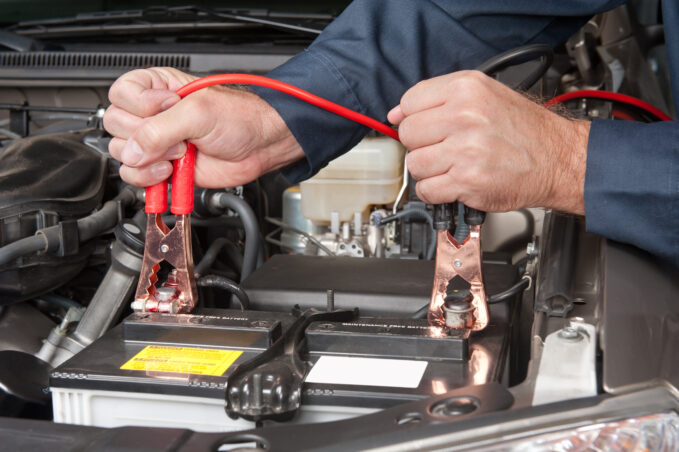
Loose battery cable connections or corroded terminals prevent your battery from delivering sufficient power to the starter motor.
Signs of loose or corroded cables:
- Battery cables wiggle or move when touched
- White, flaky corrosive build-up on battery posts
- Jumper cables get hot when connected
Troubleshooting tips
- Start car with jumper cables connected – if it starts, bad cables likely
- Remove cables and brush terminals to expose metal beneath corrosion
- Wiggle battery cables to check for internal damage
How to fix:
- Use a wire brush to scrub corrosion off terminals
- Re-tighten cable connections for a tight fit
- Replace damaged battery cables
3. Bad Alternator
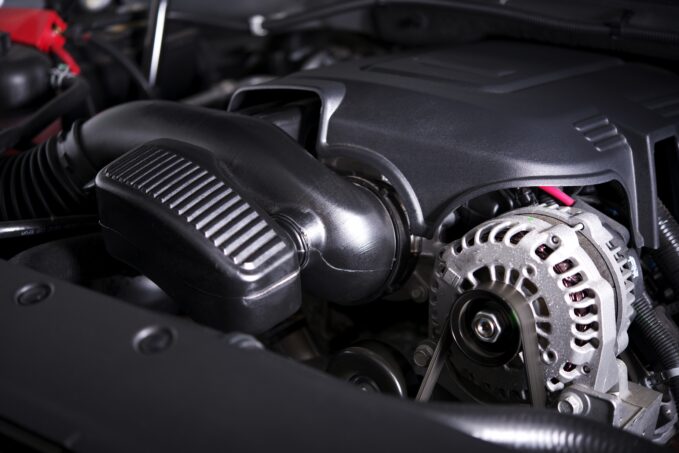
A bad alternator can contribute to a car that won’t start. The alternator works together with the battery to power your car’s electrical systems. It recharges the battery while you drive to keep it topped up.
If your alternator is failing, your battery may not get fully recharged. This can lead to a dead battery over time, even if the battery itself is still in good condition. Signs of a bad alternator to look out for include dashboard warning lights, dimming headlights, and odd noises from the alternator belt area.
Any faulty alternator needs to be replaced to ensure proper charging and prevent breakdowns. Otherwise you’ll continue having starting issues as your battery loses power faster than it can recharge.
While a dead battery may allow an initial jump start, your car will die again soon after if the alternator is bad. Be diligent about alternator maintenance and swap it out at the first sign of failure. This prevents putting undue strain on your car’s battery and electrical components.
Signs of a bad alternator:
- Battery seems to drain quickly while driving
- High-pitched whining noise, especially at higher RPMs
- Engine stalls out when electronics are turned on
Troubleshooting tips:
- Check voltage with engine off (12+V), then running (13.5-14.5V)
- Sniff for burning smell from alternator area
- Look for loose belt, signs of leaking fluid
How to fix:
- Requires professional diagnosis and replacement
- May need new battery if drained too low
4. Starter Motor Failure

The starter motor turns over the engine when you turn the key. If it malfunctions, you’ll hear clicking but no cranking of the engine.
Signs of starter failure:
- Rapid clicking noise but engine doesn’t turn over
- Engine cranks very slowly or delays before starting
Troubleshooting tips:
- Try bumping starter with a tool while starting
- Listen for grinding noises during cranking
How to fix:
- Requires diagnosis and replacement by a professional
- Consider new starter every 100-150k miles
5. Bad Ignition Switch
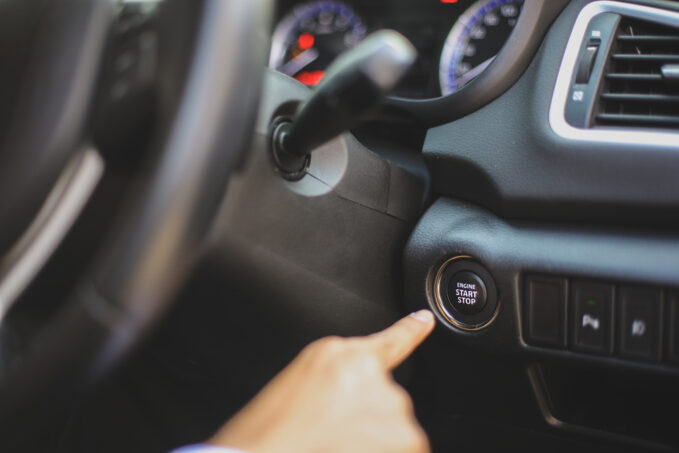
The ignition switch activates the electrical systems when turned. If it fails when putting the key in the ignition, then the starter won’t engage.
Signs of a bad ignition switch:
- Ignition key sticks or doesn’t turn smoothly
- No dashboard lights illuminate when key turned
- Steering wheel lock doesn’t disengage
Troubleshooting tips:
- Try wiggling the key gently while turning
- Check for loose wiring connections
How to fix:
- Requires professional diagnosis and replacement
- May need to reprogram anti-theft system afterwards
6. Immobilizer/Anti-Theft System Glitch
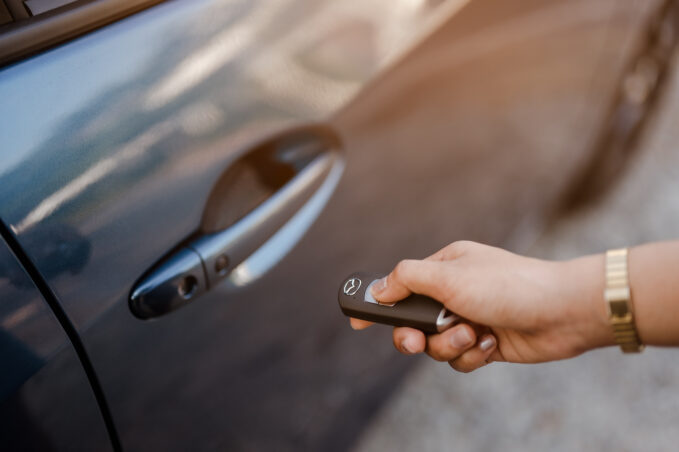
The immobilizer system prevents starting without a properly coded key. Faults can cause a no-start even with the correct key.
Signs of an immobilizer malfunction:
- Flashing security or key warning light on dash
- Car starts then immediately stalls
- Engine cranks but never fully starts
Troubleshooting tips:
- Try your spare key if available
- Check for loose wiring around immobilizer module
How to fix:
- Requires diagnosis and repair by a professional
- May require software update or replacement module
7. Empty Fuel Tank

Running your tank to empty can leave you stranded when the fuel pump has nothing left to draw from.
Signs your car has run out of gas:
- Fuel gauge on or near empty
- Engine sputtering or cuts out when low on fuel
- Lack of power before engine stops
Troubleshooting tips:
- Place your ear next to fuel tank – no sloshing means it’s likely empty
- Check your trip meter if fuel gauge is inaccurate
How to fix:
- Add a couple gallons of fuel to restart engine
- Consider fuel gauge repair if readings are unreliable
8. Clogged Fuel Filter

A clogged fuel filter prevents sufficient fuel pressure for the engine to start.
Signs of a clogged fuel filter:
- Reduced engine power
- Long cranking time before starting
- Car stalls out randomly
Troubleshooting tips:
- Check owner’s manual for fuel filter location
- Remove and inspect filter – should be transparent, not brown
How to fix:
- Replace fuel filter – consider every 20-30k miles
- Use quality gasoline to help prevent future clogs
9. Failed Fuel Pump

The fuel pump delivers gasoline from the tank to the engine. Without it, fuel won’t reach the engine.
Signs of fuel pump failure:
- No audible whine or humming from pump during cranking
- Sudden stalling while driving
- Lack of power but no other symptoms
Troubleshooting tips:
- Turn key to “on” – you should hear a brief whirring sound
- Check for blown fuse linking fuel pump and computer
How to fix:
- Requires professional diagnosis and replacement
- May also need to replace filter and clean fuel lines
10. Faulty Spark Plugs
Faulty or fouled spark plugs prevent proper ignition of the fuel-air mixture in the cylinders.
Signs of faulty spark plugs:
- Rough idle and misfires
- Hard starting or random stalling
- Oil leakage around plugs
Troubleshooting tips:
- Remove each plug and check for cracks, heavy deposits
- Compare to new plug to identify wear and fouling
How to fix:
- Replace spark plugs and wires
- Should be done every 30k miles
11. Broken Timing Belt
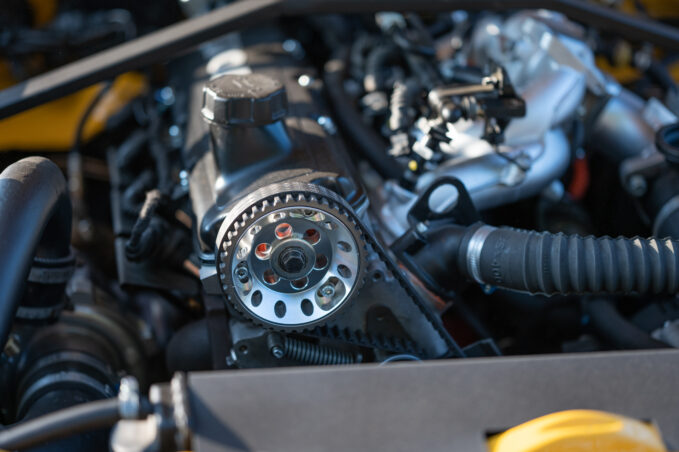
The timing belt synchronizes the crankshaft and camshaft. If it breaks, the valves and pistons collide causing engine damage.
Signs of a broken timing belt:
- Abnormal rattling engine noise
- Oil leaks from front of engine
- Car starts then immediately stalls
Troubleshooting tips:
- Look for frayed or cracked timing belt through inspect holes
- Check maintenance records – belts need replacement around 60k miles
How to fix:
- Requires diagnosis and timing belt replacement by a professional
- Additional engine repairs likely if belt already broken
- Additional Troubleshooting Tips For A Car Won’t Start
- Check the battery – should have at least 12.4 volts
- Make sure car is in Park (auto) or Neutral (manual)
- Try turning steering wheel side to side to unlock if necessary
- Look for check engine light or any warning lights on dash
- Listen for starter motor clicking vs slower cranking noises
Why We Are The Best Ask A Mechanic Service Online
If you’ve tried troubleshooting but your car still won’t start, the experts at Ask Auto Mechanics can help. We are an online community of certified mechanics available to diagnose your no-start issue and get your car going again. Just ask a mechanic online and an expert mechanic will respond with professional insight into what may be wrong, as well as expert repair advice to get you back on the road. With our help, you can get your car started and avoid an expensive tow to the shop. Reach out today and let us lend a hand!
Emergency Starting Tips
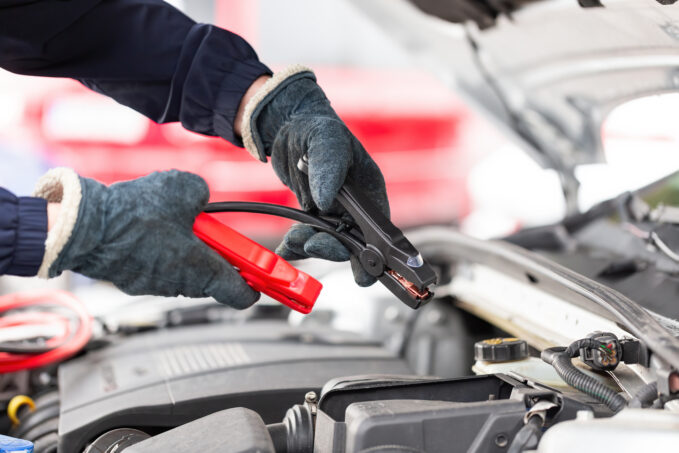
If your car won’t start and you need to get somewhere, all hope isn’t lost. With preparation and care, you can get going again, at least temporarily:
- Jump starting – Use jumper cables connected to a running vehicle to inject starting power.
- Bump starting – Push or roll a manual transmission car then pop the clutch.
- Spray starter fluid – A quick spritz down the throat of the carburetor can help fuel ignite.
- Tap the starter – Sometimes a gentle tap can jostle it back to life for one more turn.
- Roll the vehicle – Popping it in neutral and rolling downhill builds momentum to start.
- Replace starter relay – Carry a spare to swap in if the existing one fails.
These “get home fixes” only treat the surface problem though and don’t address deeper issues. Be sure to follow up with a certified mechanic for a complete system diagnosis and repairs. For even faster results speak with our certified mechanics online.
Conclusion
A car with trouble starting or one that refuses to start can quickly put a damper on your day. In many cases, the cause is relatively simple – a dead battery, loose cable, or empty gas tank. Knowing the common culprits, listening for tell-tale sounds, and using basic diagnostic tests can help you identify the likely cause. Performing basic maintenance like changing the fuel filter, spark plugs, and timing belt according to manufacturer recommendations can also help avoid a no-start situation. By following the troubleshooting tips in this article, you’ll be well equipped to handle a car that won’t start – and get back to your day.
Car Won’t Start Frequently Asked Questions
Why is my car not starting but I have power?
There are a few common reasons why your car isn't starting even though you have power:
Faulty starter motor - The starter motor that cranks the engine could be worn out or damaged. This is one of the most common causes of a no start condition.
Bad battery connection - Corrosion or loose battery cables can prevent enough power from reaching the starter to crank the engine. Check that the battery terminals are clean and tight.
Faulty ignition switch - If the ignition switch is worn out, it may not be making a proper connection to activate the starter when turning the key. The switch will need to be replaced.
Bad starter relay or solenoid - The relay or solenoid that sends power to the starter when turning the key could be defective. Testing these components will determine if replacement is needed.
Immobilizer/security issue - If your vehicle has an immobilizer system, it may be preventing the car from starting due to a security issue. Checking error codes may help diagnose this.
What to do if your car suddenly won't start?
Here are some tips if your car suddenly will not crank or start:
Check the battery - Use a voltmeter to test the battery voltage. If it's low or dead, try jump starting the vehicle. The battery cables may also need to be cleaned if corroded.
Check for loose connections - Wiggle the battery cables and inspect terminals for tightness. Loose battery cables are a common cause of no start conditions.
Check the starter - Listen for a clicking sound when turning the key. No click indicates the starter motor is likely faulty and needs replacement.
Test for spark - Remove a spark plug wire and hold it near metal while cranking the engine. If there's no spark, it's an ignition system problem.
Check emergency shut offs - Make sure the engine shutoff switch or fuel pump shut off switch haven't been accidentally triggered. These would need to be reset.
Look for error codes - Use an OBD2 scanner to check for any stored diagnostic trouble codes that could help identify the no start cause.
Why is my car not starting but the battery isn't dead?
There are several reasons why your car won't start but the battery still has a good charge:
Bad starter motor - The starter may be failing even though it has power. Stripped gears or a stuck pinion gear can cause a no crank condition.
Faulty neutral safety switch - This switch prevents starting unless the vehicle is in park or neutral. If it has failed, the starter won't engage.
Bad ignition switch - While power is supplied to the switch, a bad internal connection can prevent power to the starter. The switch will need replacement.
Broken timing belt - If an interference engine's timing belt has broken, the valves and pistons hit, potentially jamming the starter.
Immobilizer issue - The security system may be malfunctioning and incorrectly preventing the engine from starting. Professional diagnosis is needed.
Bad engine ground cable - An incomplete ground path can affect many systems, including engine startup. Clean and secure all ground cable connections.
Faulty anti-theft system - If your car has a separate anti-theft system, it may be malfunctioning and blocking the engine from starting.
How do you diagnose a car that wont start?
Here are systematic steps to diagnose a car that won't start:
Check battery charge and connections - Use a voltmeter to test battery voltage. Inspect terminals for tightness and corrosion.
Verify starter cranking - Listen for the starter motor to engage when the key is turned. No noise indicates a bad starter or connection.
Check for fuel pressure - Use a fuel pressure gauge at the fuel rail to verify fuel pump operation and adequate pressure.
Check for spark at spark plug - Remove a plug wire and check for spark by connecting the wire to ground while cranking. No spark points to ignition problems.
Check engine error codes - Use an OBD2 code reader to scan for any stored diagnostic trouble codes that could help identify issues.
Check fuse box and relays - Target the starter relay and other related fuses. Swap relays to test for failures.
Perform voltage drop tests - Test for excessive resistance in starter, battery, and ground circuits which can prevent proper starting.
Inspect starter motor - If all other systems test good, the starter may need to be replaced.
Assess anti-theft system - If equipped, bypass or reset the anti-theft system to see if that was the no start culprit.
Why is my car suddenly completely dead?
There are a few likely reasons your car would suddenly die and have no electrical power at all:
Bad battery - An old or failing battery can suddenly die, leaving the car completely inert. Try jump starting or replacing the battery.
Alternator failure - If the alternator quits charging the battery while driving, the car will die once battery power is used up.
Loose or corroded battery connections - Battery cables that are loose or corroded can cause abrupt loss of power.
Damaged power or ground wiring - Rodents, wear, or accidents can damage critical wiring that powers essential systems.
Blown main fuse - The main fuse that protects all electrical circuits could blow, causing complete failure.
Faulty ignition switch - If the ignition switch shorts internally it can cause total loss of control system power.
Bad connection at battery terminals - Loose or dirty terminals interrupting power flow could be the culprit.
Immobilizer system malfunction - If equipped, a bad anti-theft immobilizer module can trigger and shut down all systems.





